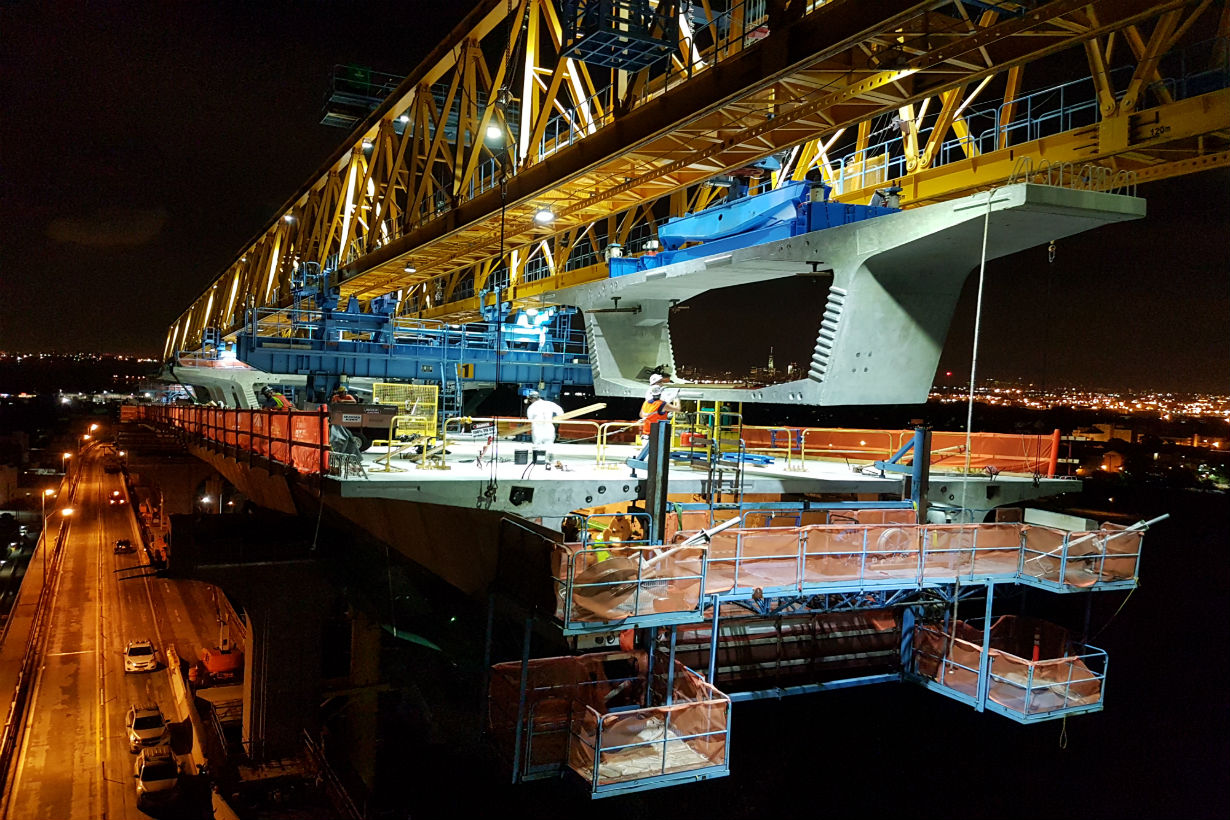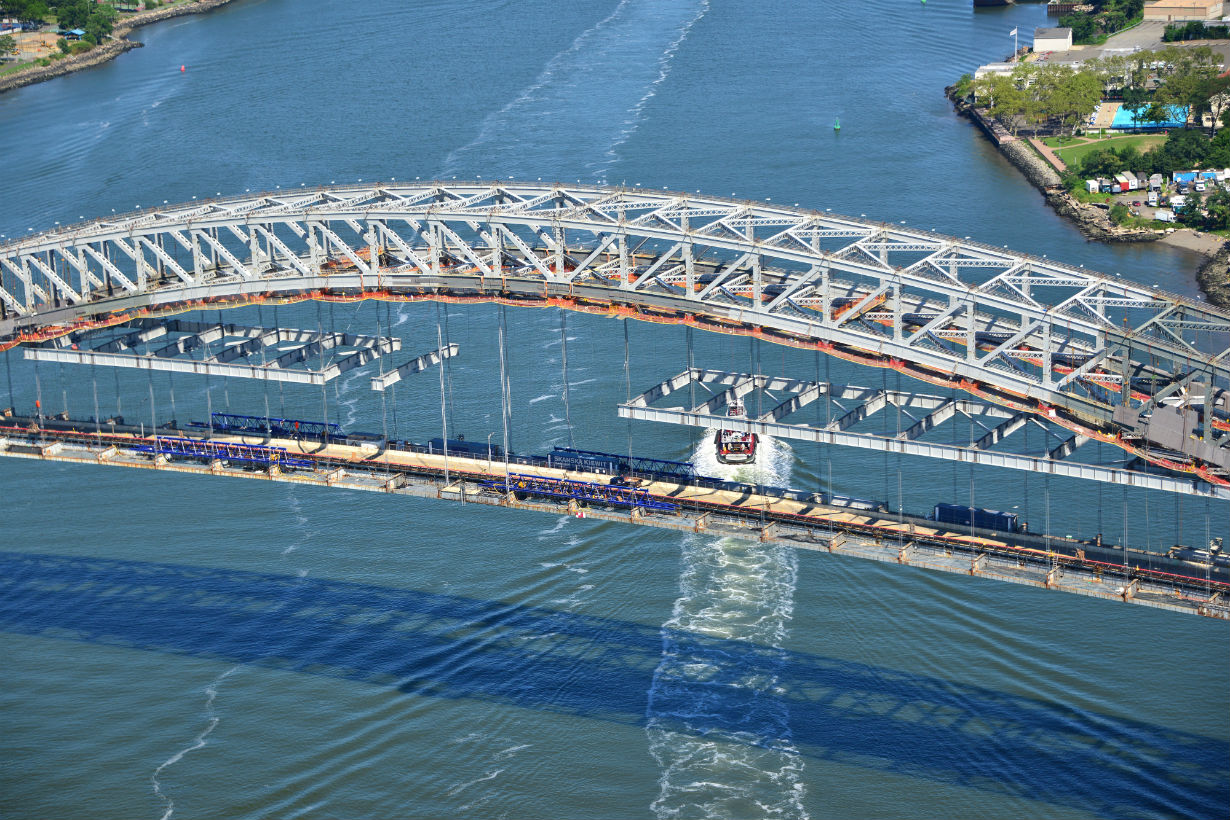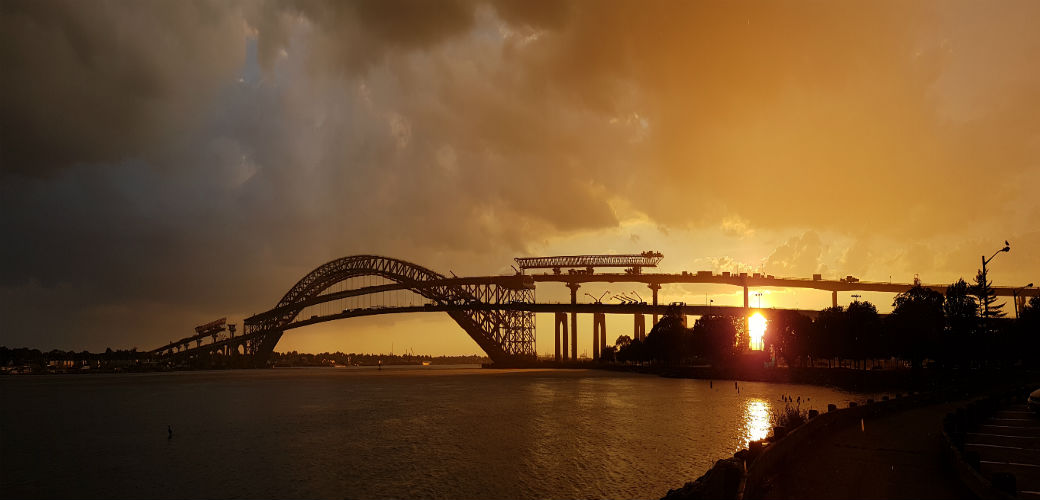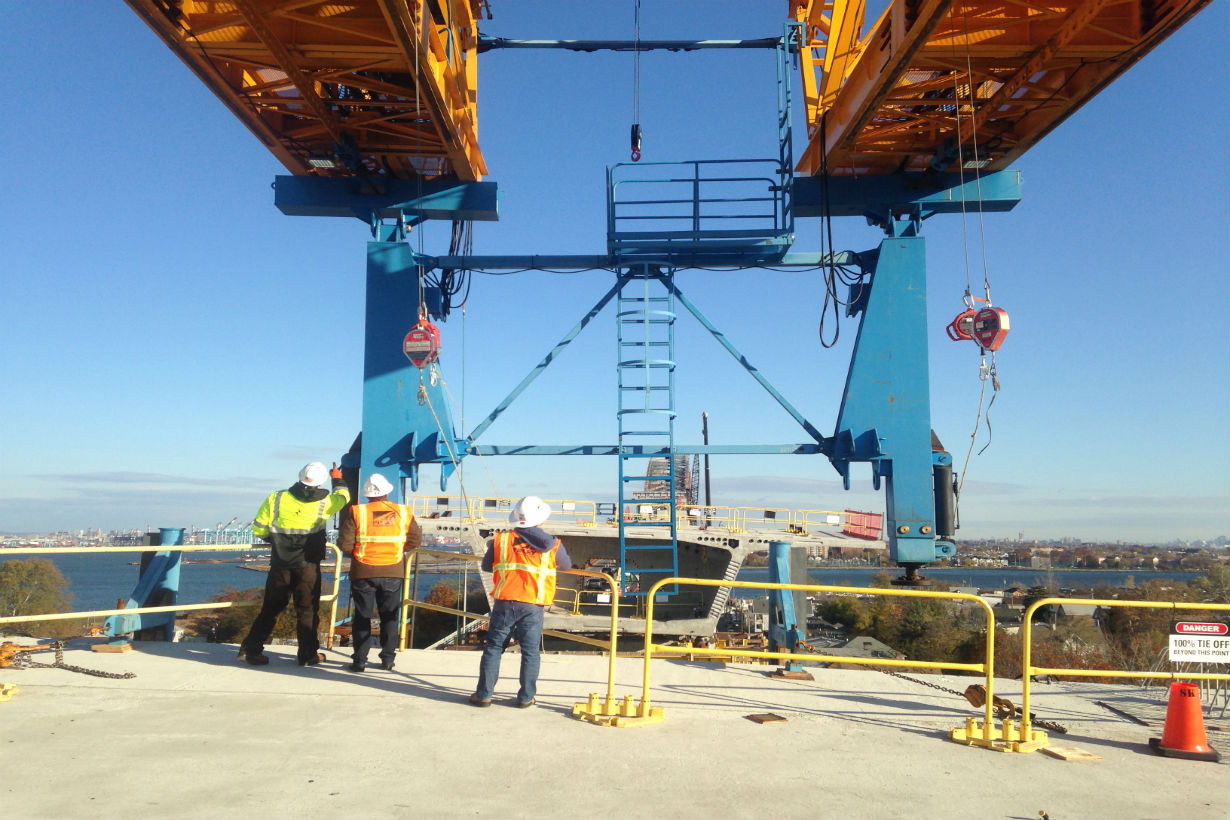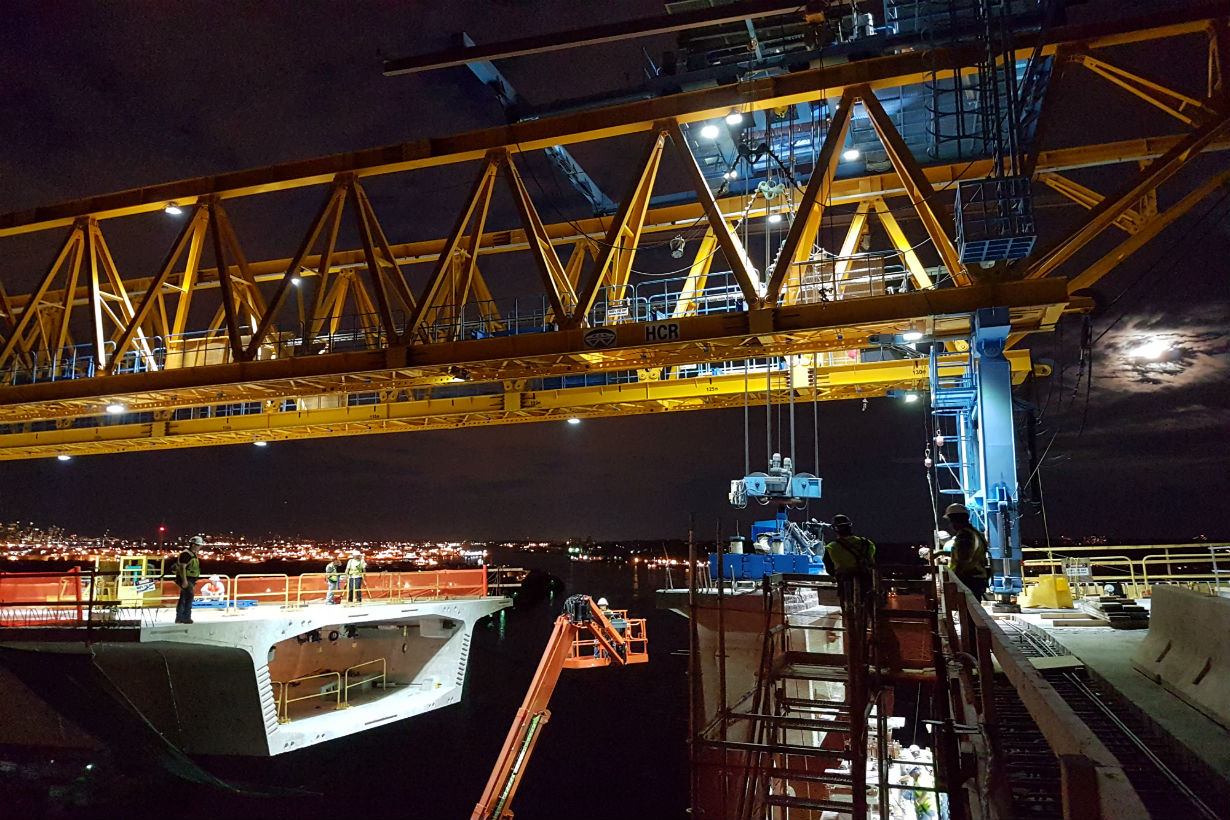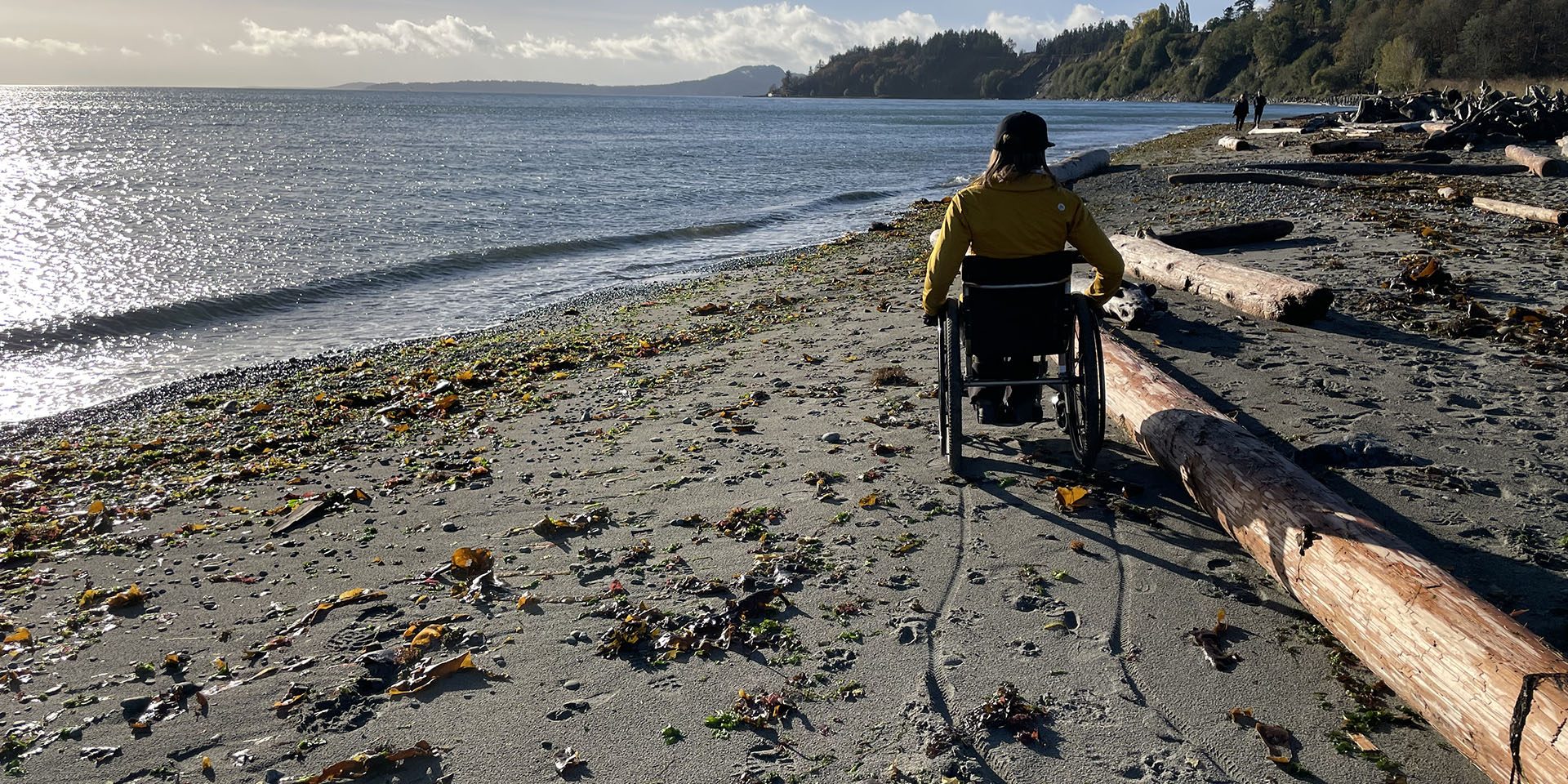Raising of the Bayonne Bridge
2013-2019 | Bayonne, New Jersey
Listen to McElhanney’s project designer and analyst, Ben Ticknor, PEng, share his experience of working on the Bayonne:

2021 ACEC-BC Award of Excellence
Category: Transportation & Bridges
The Bayonne Bridge connects Staten Island, New York, with Bayonne, New Jersey, and spans the Kill Van Kull strait. When construction finished in 1931, the bridge became the longest span truss bridge in the world. But decades later, the bridge’s clearance was too low and could not accommodate modern shipping vessels, limiting vital access to Newark Bay.
The Port Authority of New York & New Jersey – the bridge’s owner – considered replacing the structure but decided the roadway of the existing bridge should be raised 64 feet to permit the passage of modern supertankers and the largest container ships and passenger ships.
Compounding this complex challenge, the bridge had to stay open to traffic throughout the entire project. This was achieved by constructing the bridge in two phases; in the first phase, traffic was restricted to a single lane in each direction on the western half of the bridge deck, while the eastern half was demolished and reconstructed at the higher elevation. Once complete, traffic was re-routed to the newly constructed elevated roadway, and the process was repeated to raise the western half of the bridge deck in the second phase.
McElhanney’s initial scope of work was the structural review of two overhead launching gantries, used to erect the precast segmental approaches simultaneously from both sides of the Kill Van Kull strait, handling concrete segments, weighing up to 110 metric tons. Our involvement grew as the contractor – a joint venture between Skanska, Koch, and Kiewit – noticed our ability to solve problems and keep the project moving forward.
As a subconsultant, McElhanney completed:
- Structural review of the two overhead launching gantries;
- Structural strengthening of the gantries;
- Analysis of the construction sequence, which considered load limits, deflections, clearances, and stability of the gantries and the balanced cantilevers;
- Hurricane wind securement;
- Side shifting of the gantries across State Hwy NY / NJ 440;
- Span-by-span construction of end span segments;
- Work plans for daily operation (which included the production of more than 3,000 operations drawings).
Read a feature from The New York Times describing the raising of the bridge.
The need to minimize disruption to the safe and ongoing public access to the bridge created significant challenges and required extensive engineering input. For example, months of planning went into the side-shifting of the two overhead gantries from one side of the highway to the other during a weekend road closure. The team got it done within the tight window, permitting the bridge to be reopened to traffic just before the Monday morning rush-hour.
“While the challenges of these larger projects are amplified, so are the rewards, and the resources available. You’re working with contractors and crews that are at the top of their game. We rely on them as much as they do on us, and it’s incredibly rewarding to look back on what you’ve achieved together,” McElhanney’s Project Manager Dan Ashby said of the project.
As well as the raised roadway, the project – which took six years – included widened roadway lanes, the addition of shoulders and a median barrier, and a new bikeway, and walkway. These upgrades were welcome news for residents and commuters, who were used to a bridge with 3.0m lanes, no shoulders, no sidewalks, and no centre median. The retrofit has also made it possible for the bridge to accommodate a light rail transit line.
While the raising of the bridge was completed mid-2017, all lanes were not open to traffic until February 11, 2019, concluding the chapter that brought this historic structure into the modern age for travelers across and ships below.
